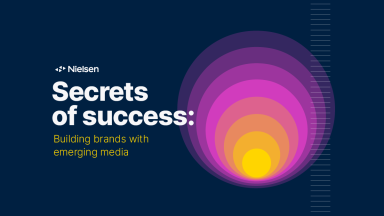In 1993, Vernor Vinge, a retired professor of mathematics, computer scientist and award-winning science fiction author, argued that the creation of superhuman artificial intelligence would mark the point at which “the human era will be ended.” This idea, associated in popular thinking with the futurist Ray Kurzweil of 2005’s The Singularity is Near, posits a moment when computing advances to the point that computers become self-directing, direct their activities to making themselves ever more intelligent, and surpass human comprehension or understanding.
Perhaps it seems like a far-fetched concept in its fullest form. But what about the advertising industry, which has seen so much human activity taken over by computers? Is there an impending advertising singularity? Could artificial intelligence advance advertising and media optimization beyond our ability to understand the decisions being made?
I’m not the first one to entertain this thought. For instance, Matt Herman wrote about it (and mostly wrote it off) as it relates to advertising creative development in a 2010 Ad Age article “Glitch in the Coming Advertising Singularity.” Meanwhile Roger Toennis suggested that “The Marketing Singularity is Near,” and how it would take Marketing “back to the future” of pre-broadcast media one-to-one word-of-mouth marketing.
For me, the short answer is that in “creative,” the singularity is unlikely. In everything else, it is to some degree already arriving, but there remain factors that may mean it is part of a larger ecosystem that still includes human involvement.
The Creative Singularity
Put me clearly in the skeptic column when it comes to an advertising creative singularity. In a recent Nielsen Newswire post, I wrote about the five factors associated with creative success in advertising. It’s hard to imagine a computer-driven creative singularity anytime soon, given the uniquely human nature of storytelling, humor and the other creative elements that go into good ads.
That said, algorithms have been developed to write music and news stories: check out “Can Creativity Be Automated?” in the MIT Technology Review.
The Media Singularity
Here, the proponents of a singularity are on more solid ground. Unlike creative, media planning, buying and measurement is much more likely to be more automated, smarter, faster, self-improving and thoroughly beyond the ability of humans to understand. In fact, it is already being done in some cases through real-time bidding platforms in digital. The media singularity beckons.
The component parts are mostly here, although they aren’t fully functioning in an integrated fashion, and they are absent altogether in some areas of the media ecosystem. What are the elements of a fully automated, smarter-than-human, media optimization singularity, and how likely is it?
Digitization. Digital enables data to be fully exploited by computing. The more digitized the advertising and media data, the more computing power can buy, measure and improve performance, automatically, in real time, and without human intervention.
- Exposure and Conversion Data. The capturing of data, including the drivers (such as audiences, viewability, content, exposure frequency, placement, etc.) and the outcomes (such as brand impact and conversion), is making it easier and easier to understand what works, what doesn’t and how to improve. Much of this data-capture now takes place in highly automated, real-time systems, many of which were pioneered by digital attribution modeling firms, and can leverage both first-party advertiser data as well as third-party data.
- Attribution Modeling. We’ve measured advertising and media sales effects for years now with single-source analyses of covariance (ANCOVAs) and marketing mix modeling. Both are very good at what they do. The emergence of non-PII (non-personally identifiable information) exposure and conversion data at the individual level will enable the brand or sales impact measurement of each and every touch point and all combinations of touch points, online and offline, at the individual level in real time. Once you can attribute brand and sales impact to touch point exposure, you can optimize performance.
- Machine Learning. Machine learning is a branch of artificial intelligence, including the set of activities associated with systems that can learn from data and improve over time without human intervention (a kind of mini-singularity). Machine learning capabilities tied to attribution modeling will enable machines to learn by themselves to improve and optimize advertising performance continuously.
- Programmatic and Real-Time Bidding. Already, over 20 percent of display advertising is transacted via real-time bidding (RTB) platforms. The platforms, processes and data sets are already in place to power RTB beyond display advertising, although TV and other non-digital mediums are mostly out of bounds, certainly for now. Much of the current RTB focus is based on audience types, web behavior, sending ads to those whose activity (anonymously received) identifies them as likely to be responsive, and so on. But, it’s not an impossible leap to driving RTB based on brand and sales impact via the attribution modeling capabilities covered above.
So what this may amount to is a future world in which individual level exposure and sales data is digitized and connected thru APIs to data platforms, attribution models run in real time, machine learning iteratively improves results, and buying is transacted through real time bidding platforms. In limited form, this future already exists in sub-scale pockets of the advertising eco-system. The reason it makes sense to think of this possibility as a singularity is that all of this will happen at lightning speed—in milliseconds, and at massive scale—incorporating hundreds of millions of data points—such that it will be beyond any human’s ability to comprehend what is happening except at a conceptual level.
All that said, there are certainly still reasons to be skeptical about a broad scale advertising singularity, and they’re not to be minimized. Existing business models, technology platforms, processes, media and device fragmentation, digital ad fraud/bots, industry habits, personal relationships and other factors are all very real hurdles to the realization of this future state.
So the technology building blocks are already in play, but there are factors that will impede the arrival of a singularity. What that means is that we should expect progress toward a singularity to be rapid, albeit along a jagged, non-linear path. Much of advertising as we’ve known it for the past 100 years or so will be disrupted.
As to whether a true singularity be reached—of all the factors that argue against it, the human element is perhaps the most powerful. In that regard, the singularity may come, but later than people expect.
Whatever the final result, here comes the future of advertising, and one thing is certain–it will be a singular experience.



